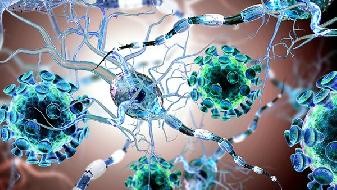In recent days, we believe that everyone has seen the news that COVID-19 mutates again. After mutation, the number of viral vectors will increase, and the mortality rate after infection will also increase. So, what does Omicron mean? How many mutations has COVID-19 occurred?

COVID-19 has undergone several mutations. Up to now, COVID-19 has undergone five mutations, namely Alpha, Beta, Gamma, Delta, and the latest South African new mutation, Omikron.
1. Alpha was first discovered in the UK at the end of 2020, and the main feature of the mutation is the enhanced transmissibility, while the toxicity seems to have increased, but it is not very prominent. Beta was discovered in South Africa at the end of 2020. This variant virus strain has another mutation in the spike protein. Its characteristics are increased transmissibility and toxicity. The protective efficacy of mRNA vaccines already on the market is relatively reduced against this variant virus. In December 2020, 42% of the 31 samples sequenced by Gamma in the Amazon state of Brazil were found to be infected with this variant strain. Gamma has several mutations, including three mutations located in the spike protein receptor binding domain, so some believe it may increase transmission rates and affect immunity.
4. Delta was first found in India in December 2020, and this mutation may be the most transmissible COVID-19 mutation by August 4, 2021, and its severe probability is higher.
5. Omicron As of November 27, 2021, a new variety of COVID-19 "Omicron" has been found in Britain, Germany, Italy, Israel and other countries and regions. What does Omikjon mean? Omikjon refers to a variant of the novel coronavirus that broke out in 2019. This variant was found in South Africa in November. On the 26th, an emergency meeting was held by WHO to discuss B.

1.
1.529 COVID-19 variant, and named it Omicron.







Comments (0)
Leave a Comment
No comments yet
Be the first to share your thoughts!